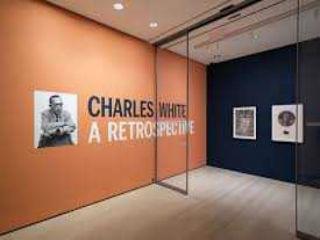By
Alexandra Papaisidorou
MoMA is devoted to today’s most experimental, thought-provoking contemporary art. “Extrait de Culture” by EBR is devoted to today’s most experimental museum proposals, thought-provoking art interview reports.
Founded in 1929 as an educational institution, The Museum of Modern Art is dedicated to being the foremost museum of modern art in the world.
The Museum of Modern Art establishes, preserves, and documents a permanent collection of the highest order that reflects the vitality, complexity and unfolding patterns of modern and contemporary art; by presenting exhibitions and educational programs of unparalleled significance; by sustaining a library, archives, and conservation laboratory that are recognized as international centers of research; and by supporting scholarship and publications of preeminent intellectual merit.
EBR interviewed exclusively Esther Adler, Associate Curator, Department of Drawings and Prints, who organized everything and speaks out for the Artist that insisted: ‘Art must be an integral part of the struggle’… a struggle as topical and evergreen as ever!
INTERVIEW
Charles White’s meticulously executed drawings and paintings speak of and affirm the humanity and beauty of African American people and culture. Could you please explain us how people usually respond and interact in the view of his work of art?
African Americans were Charles White’s main subject matter throughout his four decade career, but he envisioned his work as universal images of human beings, depicted in a fully realized manner that captured the complexity of their intellectual and emotional character.
This underlying goal, together with his incredible artistry and masterful graphic technique, allowed him to create drawings, paintings and prints that are as effecting emotionally as they are visually – you can marvel at his ability to capture people in charcoal and ink on paper, and be incredibly moved by his empathetic reflection of their state of mind. It’s been very gratifying to watch our visitors connect with the works in the gallery – I think it’s hard to look at a work by Charles White and not be moved in some way.
How does Charles White’s personal life influence his inspiration? It’s well known that he spent hours at the Public library in Chicago as a child, so, did books and writers help shape the artist's worldview depicted on his artistic work?
Charles White’s personal life experience is what led him to choose a very specific path as an artist. He grew up in poverty in Chicago, and was very aware of the injustice of social and political conditions in the United States for African Americans, and how this directly affected him, his family and his community.
He decided even as a young adult to make art work that directly addressed these conditions of injustice, and to make works that helped celebrate African American accomplishments and strength, and he stayed faithful to this artistic goal for his entire career, even as his style changed and developed over time, and he found new and different ways to communicate with his viewers.
What is the key point that worths visiting ‘Charles White: A Retrospective’ in MoMA this January?
This is the first major exhibition of Charles White’s work in over 30 years, and is a rare chance to see works from across his career in dialogue with each other, to trace the connections between works made decades apart during very different moments in American history. We have worked hard to bring together the very best examples of White’s work from across different mediums – drawings, prints, paintings, photography, and even ceramics – in order to show why this artist is such a critical voice in 20th century art.
The artist’s interracial instincts to fight social injustice in the United States aligned him with other like-minded modernists, and particularly the progressive artists. What other characteristics could you mention related to his unique muralist & social realistic style?
Charles White worked in a representational, figurative style for his entire career, even during decades when large scale abstraction, conceptual art, and other artistic movements were capturing the attention of the art world.
His dedication to his chosen style was due, in large part, to the fact that it made his work accessible to everyone, both audiences in museums and galleries as well as to entire communities that would not have access to these exhibition spaces. This goal of accessibility was critical to his practice, and helps explain why murals were so attractive to him – it allowed him to make large-scale images in prominent public places where his work could be easily seen.
All of his works, however, from his early paintings to his powerful drawings of the 1960s and 1970s, show this same dedication to making art that his viewers could easily access, understand, and respond to.
The artist mainly tried to give his images universality – meaning an enduring sense of truth and beauty - Is there a liaise between art and cultural unity among nations, in your opinion?
Charles White believed that art was a critical part of all of our lives, and that it could have a real effect on social and cultural positions, both in the United States and more broadly across the world.
He travelled to meet people from other countries, to meet artists and visit their major cultural institutions, and I believe that he would have agreed that cultural exchange is a wonderful way to encourage friendship and understanding between different nations. His believe in shared humanity was not tied to international borders, but rather extended to all people, everywhere.
*Editor-at-large & PhD candidate of European & International Relations




 By: N. Peter Kramer
By: N. Peter Kramer
